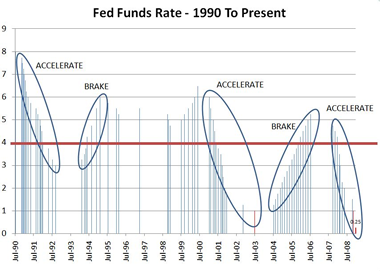Canadians Safe From Global Warming
SEARCH BLOG: GLOBAL WARMING
It appears that despite warm temperatures in Australia, Canada has managed to insulate itself from the heat ravages of global warming. Joe D'Aleo at Icecap provided a link to this information about March 2009 temperatures in Canada:
For those of you unfamiliar with the °C scale, here is the conversion:Temperature records were broken across Western Canada. In some cases by a substantial amount. See below for details.
March 12, 2009 (as of 9am EST)
Alberta
Station New Record Old Record Year Kindersley Airport -25.5C -19.7C 1989 Cranbrook -16.0C -15.6C 1976 March 11, 2009
Alberta
Station New Record Old Record Year Coronation -35.5C -34.4C 1956 Edmonton Airport -38.3C -30.6C 1970 Lloydminster -32.0C -30.6C 1956C Cold Lake -36.4C -32.8C 1956 Pincher Creek -31.5C -29.4C 1950 Sundre Airport -33.4C -27.3C 2003 Claresholm -33.2C -26.1C 1962 Waterton Park -33.6C -18.9C 1967 March 10, 2009
British Columbia
Station New Record Old Record Year Pitt Meadows -5.4C -5.0C 1985 Squamish -7.4C -3.9C 1962 Campbell River -8.4C -5.6C 1969 Kelowna -20.9C -18.9C 1951 Osoyoos -11.4C -5.9C 2006 Princeton -26.6C -22.2C 1951 Sparwood -23.6C -15.1C 2006 Clinton -28.2C* -16.1C 1975 Williams Lake -27.1C -22.8C 1925 Burns Lake -34.4C -30.0C 1956 Chetwynd -36.5C -30.7C 1987
*Monthly record: the lowest March temperature on record for that station.Alberta
Station New Record Old Record Year Edmonton Airport -42.7C -29.4C 1975 Lloydminster -35.2C -29.2C 1998 Fort McMurray -39.9C -38.3C 1950 Cold Lake -39.6C -31.7C 1956 Slave lake -39.5C -33.9C 1956 Whitecourt Airport -36.4C -35.0C 1950 Peace River Airport -36.6C -33.3C 1951 Edson Airport -38.7C -37.2C 1951 High Level Airport -37.3C -36.0C 1987 Jasper -32.9C -31.7C 1951 Banff -31.3C -28.9C 1951 Waterton Park -25.8C -19.6C 1998 Sundre -32.3C -24.7C 2003 Rocky Mountain House -38.9C -35.6C 1951 Saskatchewan
Station New Record Old Record Year Key Lake -46.0C -41.0C 1998 Meadow Lake Airport -42.4C -37.3C 1998 Stoney Rapids Airport -42.7C -41.1C 1968 la Ronge -38.5C -33.9C 1998 Assiniboia Airport -33.1C -29.7C 2002 Collins Bay -36.7C -34.0C 2004 Weyburn -32.1C -31.5C 2002 Nipawin Airport -34.0C -33.3C 1933 Elbow -31.8C -30.0C 1998 Watrous East -30.5C -29.7C 1998
Canadian provinces, unlike U.S. most states cover significant north-south geography, so any all-time province records may not be as significant and the more discrete U.S. state records. Still, some of the cold temperature records listed above were 20°F colder than the old marks.
°F °C °C °F 100 37.8 30 86 90 32.2 25 77 80 26.7 20 68 70 21.1 15 59 60 15.6 10 50 50 10.0 5 41 40 4.4 0 32 30 -1.1 -5 23 20 -6.7 -10 14 10 -12.2 -15 5 0 -17.8 -20 -4 -10 -23.3 -25 -13 -20 -28.9 -30 -22 -30 -34.4 -35 -31 -40 -40.0 -40 -40 -50 -45.6 -45 -49 -60 -51.1 -50 -58
Of course, these records are probably going to be ignored by NOAA.
So the question continues: where is the global warming? And why hasn't the "significant increase of CO2 in the 20th century" affected weather more significantly?
Global warming means more hot and cold weather records. Sure. Just like boiling water to make ice cubes...








